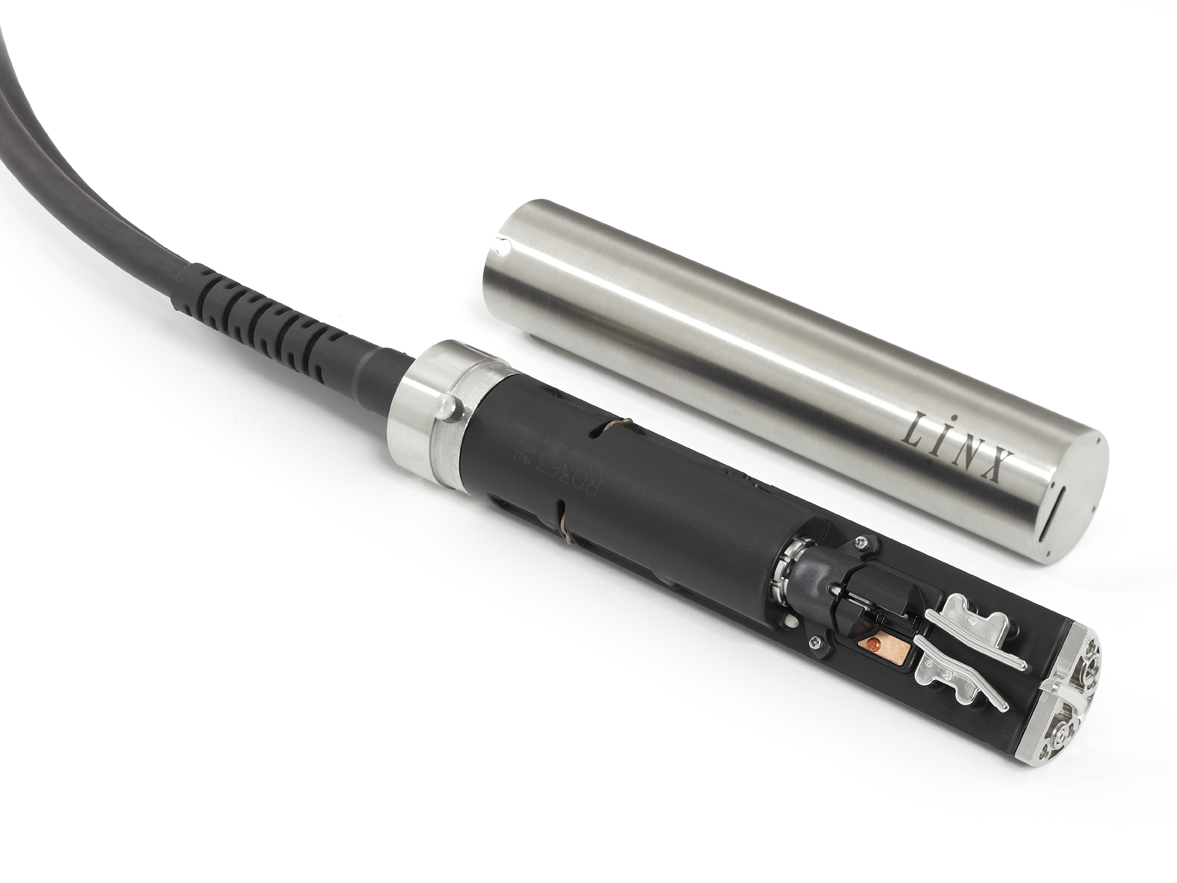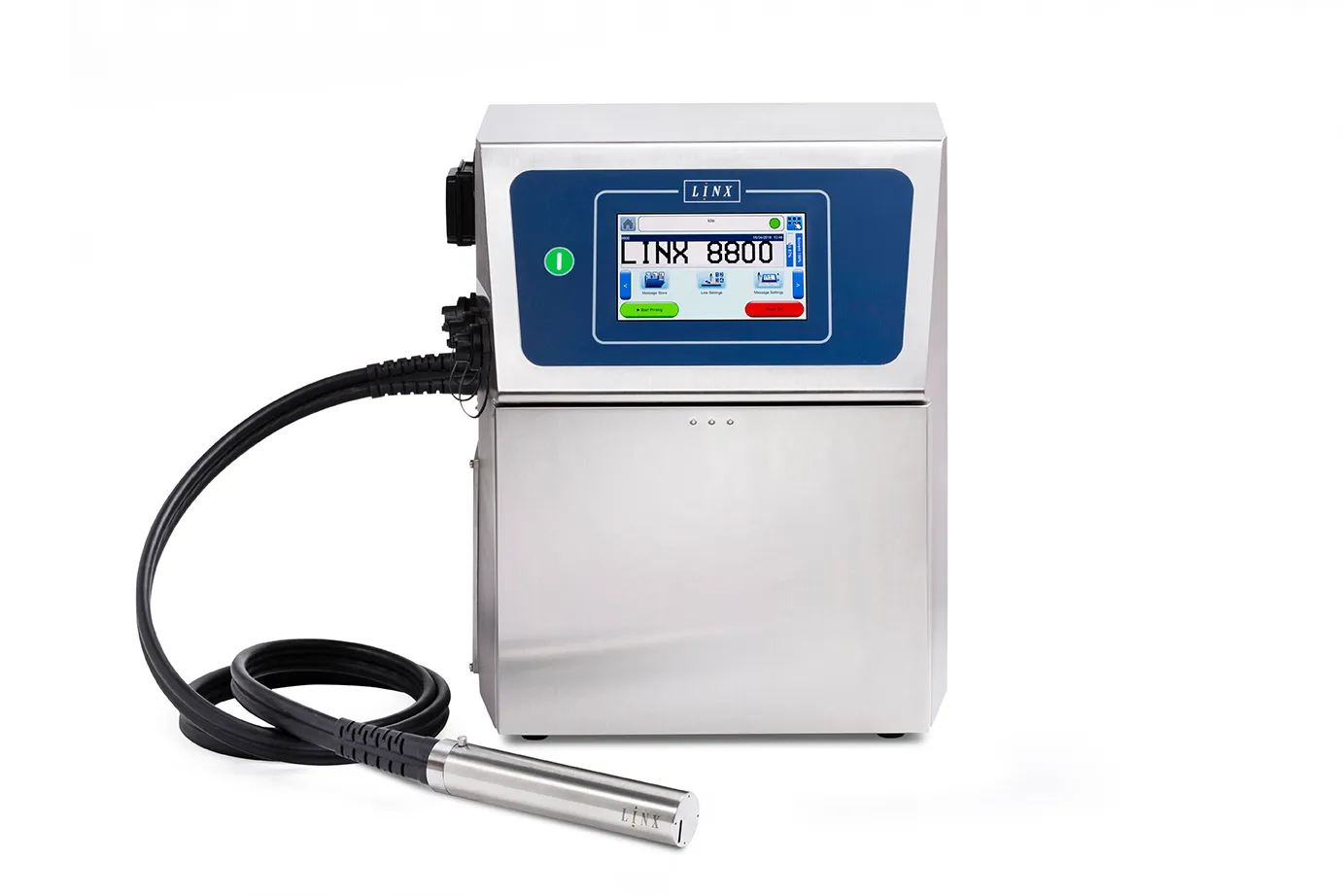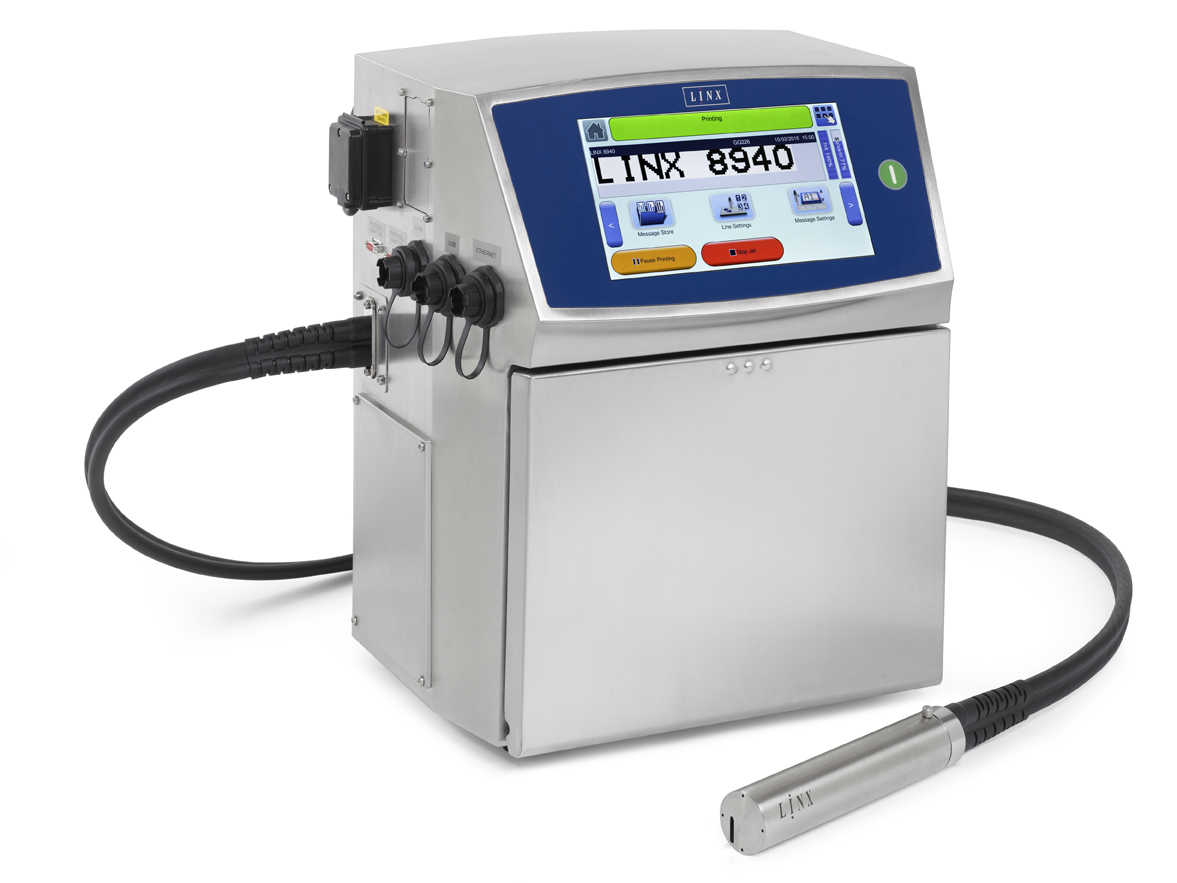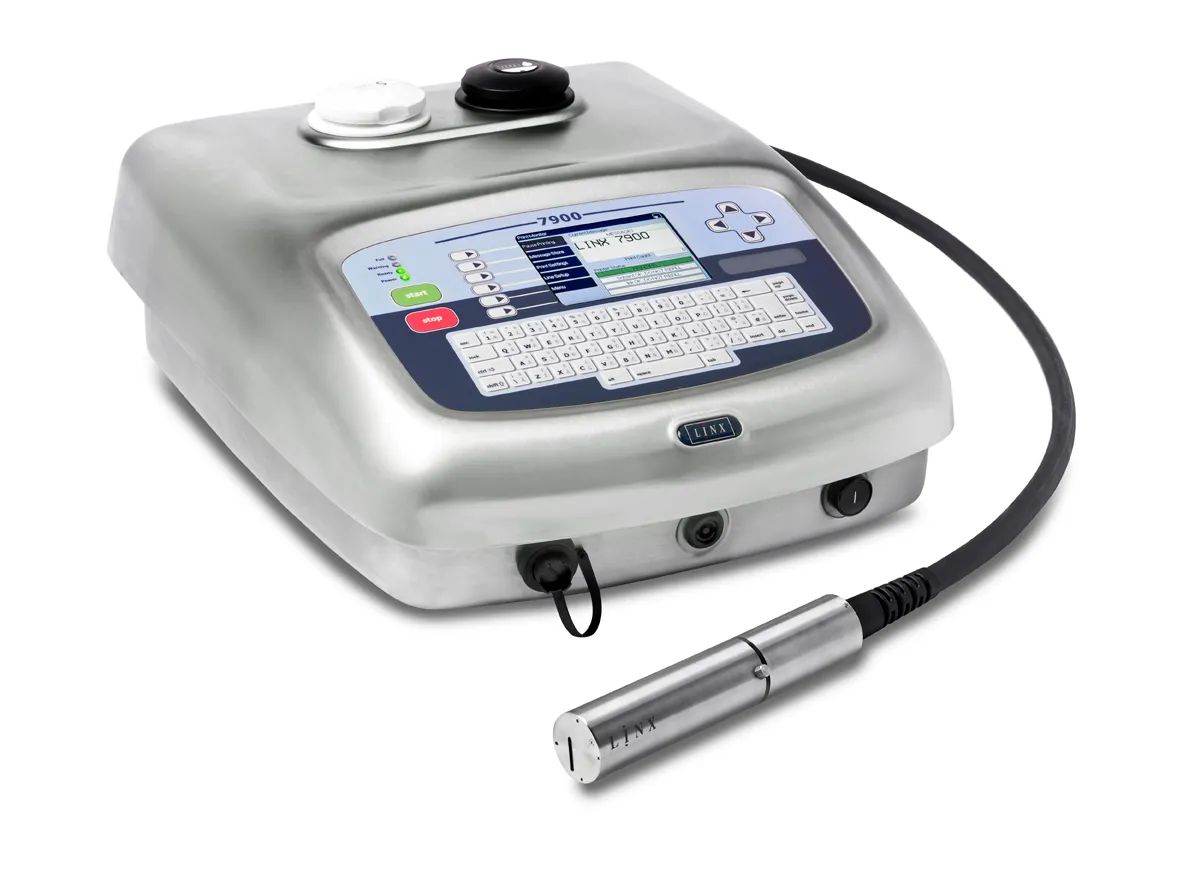Continous Inkjet (CIJ) Printing
How does a CIJ printer work?
Continuous Ink Jet systems (CIJ), or Industrial inkjet printers, work by expelling electrically charged ink droplets from a printhead nozzle and passing them through an electric field.
The ink jet is broken into drops inside the chamber through a pulse from the piezoelectric crystal. Droplets that are required for printing are charged by an electrode as they break off from the ink jet, and the printer re-circulates the rest.
The droplets, now charged, pass through an electrostatic field between deflector plates, a combination of speed and charge determines the correct position of the droplet on the substrate.
Up to 120,000 of these tiny droplets – half the diameter of a human hair – are expelled every second, and as this is done without contact to the material being printed on.
Continuous Inkjet Coding and Marking
Linx inkjet printers can code onto most materials, regardless of porosity, size, shape and texture. Used mainly to print variable information on individual products – such as dates, times, specific text, batch codes, product names and logos. Particularly useful for providing traceability data and for complying with increasingly strict industry legislation.




